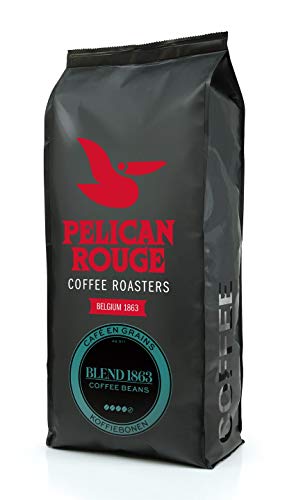10 Things You Learned In Kindergarden That'll Help You With Types Of Coffee Beans

Types of Coffee Beans
Behind every cup of coffee that we enjoy, there are carefully graded beans. These beans are analyzed by their size, color, shape and density.
The AA grade is granted to coffee beans that fulfill the criteria mentioned above, with the exception that they cannot contain more than three defects (quakers). Most often, these are Kenya AA beans.
Arabica
Arabica coffee beans, also known as Coffea arabica are the most sought-after kind of bean around the globe. According to legend, coffee was discovered by the goatherder of Ethiopia after he observed that his animals had more energy when they consumed the fruit of the plant. This led him to try roasting and brewing the seeds, creating the beverage we now know and cherish today.

While many types of coffee plants are available, there are only two primary species used as the foundation for all of our favorite coffees: robusta and arabica. The flavor of the final beverage is typically better with the earlier.
There are a variety of varieties of arabica cultivars, each each one possessing its own unique flavour profile. Two of the most well-known varieties are Typica and Bourbon which are the basis for all other arabica varieties were developed either by natural mutation or through deliberate crossbreeding. The SL28 cultivar, for instance, was developed in Kenya by Scott Labs and is known for its distinct chocolatey flavor.
The taste of an arabica variety depends on the environment in which it was grown, and also on how it was handled and cooked. For instance, the type of shade a tree gets in its altitude, its elevation and soil composition will all play a significant role in the final result.
Robusta
Robusta coffee beans (Coffea canephora) are the second most well-known variety of coffee beans. They are the beans used in the majority of instant coffees and contain twice the amount of caffeine as Arabica Coffee Beans. They are also used in numerous espresso blends, especially for cappuccino and caffe latte.
Coffea Canephora is an African plant that was first discovered in Sub-Saharan Africa. It has been cultivated throughout the world since. It can thrive at lower elevations and can withstand higher temperatures than Arabica coffee plants, which makes it a better choice for farmers. Vietnam is currently the largest producer of robusta coffee followed by Brazil and Indonesia.
The robusta plant is a good coffee, but it's not popular with cupping enthusiasts due to its bitter taste and burnt-rubber aroma. The majority of large coffee companies use arabica beans to make their premium coffees because it's considered to be a less premium coffee.
The demand for premium coffees is growing, and small roasters are exploring to make the most of its exceptional qualities. Our Valhalla Java and Death With Coffee are two examples of exceptional robusta coffees. They are blended with arabica to create the perfect blend of flavour and strength. These coffees are procured from Uganda where robusta has been cultivated for long periods of time. Read more about these coffees.
Liberica
Liberica coffee beans are rare and aren't used much around the world. They're less than% the world's consumption of coffee beans and are often overlooked as they don't have as much caffeine. However, these beans possess distinct flavor that a lot of coffee lovers find irresistible.
Liberica coffee beans, despite being extremely rare, are still quite popular in some parts of Asia. They are most popular in Malaysia and Indonesia where there is a significant Muslim community. In these countries the coffee industry has been very robust for a long time. The consumption of a cup of coffee after a prayer is an integral part of their customs.
bean to cup coffee beans of Liberica coffee began in the 1890s, when an outbreak of coffee leaf rust wiped out the majority of the world's arabica crop. This caused coffee producers to look for a robust plant that could flourish in tropical climates. They soon discovered Liberica.
Liberica plants have a high tolerance for pests and diseases which makes them a perfect replacement for the ravaged arabica crop. Liberica can also grow in lower altitudes and high temperatures which allows it to thrive in Southeast Asia's climate. This is why, today, most of the coffee grown in the Philippines, Indonesia, and Malaysia is made from Liberica beans.
Excelsa
Although it's not typical for coffee lovers to find excelsa beans in their cups, these exclusive beans are beginning to gain a reputation for their unique flavor. According to Komal Sable, a fifth generation coffee farmer with South India Coffee Co. These beans are "a variation of the liberica species with similar teardrop-like shapes but smaller size." However despite this resemblance to the family it's important to know that excelsa is technically not a distinct species.
It's unclear how to categorize excelsa beans. This confusion is largely to blame for the low presence of these beans in the contemporary coffee world. Because of this, many roasters, growers, and brewers aren't sure how to cultivate or utilize these beans properly.
It's ultimately the individual's responsibility to decide if they like the taste of excelsa and it could take a while to find the perfect blend. It is important to be open and test every type of coffee until you've discovered the one you enjoy. If you do this you'll be able enjoy the full potential these unique beans have to offer. This is a trip worth the effort.
